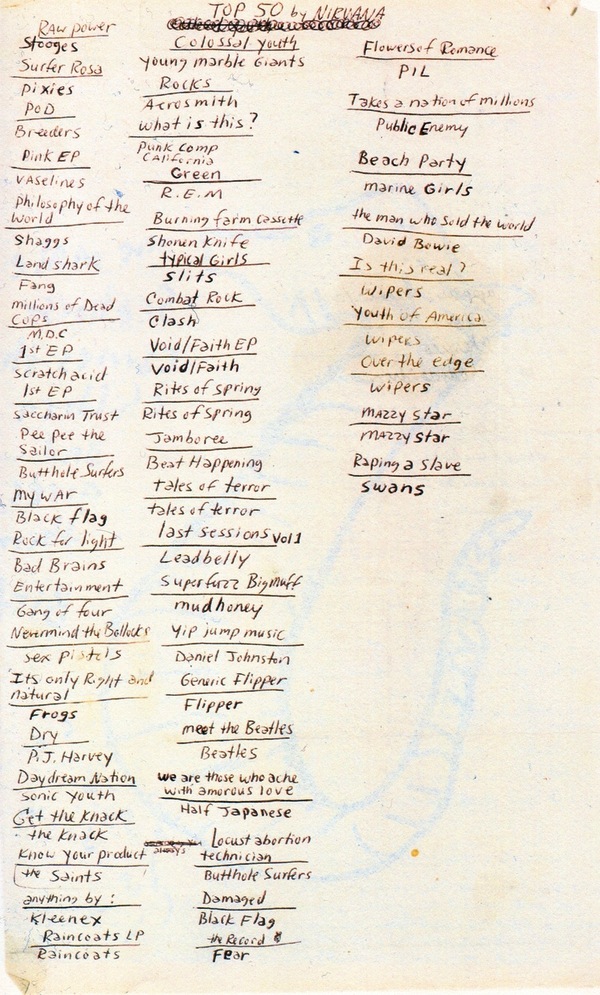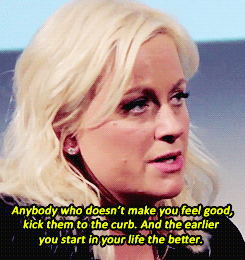 If there's one spy skill we all envy, it's the Sherlock Holmes-like ability to quickly read a situation and come up with a theory that explains it (like the toothpaste stain that reveals your co-worker overslept, or the nervous twitch that shows your friend drank too much). Luckily, anyone can hone these same skills, and it isn't that hard. Here's how to do it.
If there's one spy skill we all envy, it's the Sherlock Holmes-like ability to quickly read a situation and come up with a theory that explains it (like the toothpaste stain that reveals your co-worker overslept, or the nervous twitch that shows your friend drank too much). Luckily, anyone can hone these same skills, and it isn't that hard. Here's how to do it.
Observing people and situations is an incredibly valuable tool. It gives you the ability to notice subtle cues during conversations, job interviews, presentations, and anywhere else so you can react to situations more tactfully. These are the trademark tools of Sherlock Holmes, as well as modern day detectives you see on TV shows like Psych, Monk, or The Mentalist. To figure out how to train your brain for Sherlock Holmes-esque intuition, I spoke with journalist and psychologist Maria Konnikova, author of the upcoming book Mastermind: How to Think Like Sherlock Holmes. The two core values of Holmes' skills are simple: observation and deduction.
Increase Your Powers of Observation
 Most of us don't pay attention to the world around us. What makes a detective good is the ability to notice small details. Konnikova suggests this is all about building the habit of being mindful of your surroundings:
Most of us don't pay attention to the world around us. What makes a detective good is the ability to notice small details. Konnikova suggests this is all about building the habit of being mindful of your surroundings:
It's not a superhuman ability. It's important to note when talking about Holmes that he has spent a lifetime cultivating the habits of mindfulness. So it's not like he was just born with this ability to be in touch with the world. What we choose to notice or not notice is a way of framing it in our own mind. We have a lot of bad habits in our mind, and we have to retrain ourselves to really notice the world. Everything we do rewires the brain, but we can rewire it in a way that mindfulness eventually becomes less of an effort.
Our worst habit is that we simply don't pay attention. We're always trying to get things done quickly, and because of that, we lose the childlike wonder of focusing in on the smaller details and asking "why is that there?" So, like any habit, increasing your powers of observation means first identifying your bad habit (you prioritize getting things done fast and miss the smaller details), and cultivating new habits (slowing down and paying attention). The first step is to just stop and pay attention every once and awhile, but here are a few things you can do to train your brain along the way. Photo by Olivier Bacquet.
Give Yourself Monthly or Daily Challenges That Force You to Slow Down
 One of the classic tricks for forming a new habit is to gradually work yourself into it every day. Since we're looking at observation as a habit, let's start by observing one new thing every day.
One of the classic tricks for forming a new habit is to gradually work yourself into it every day. Since we're looking at observation as a habit, let's start by observing one new thing every day.
You can do anything you want here, provided it causes you to slow down and observe the world from another angle. Personally, I try to take one interesting picture a day (like the 365 Project). For me, that means stopping and actually paying attention to the countless amounts of weird things I usually don't notice when I'm moving around my city. Other ideas could include trying new foods weekly and writing about them, noticing the color of a co-worker's shirt every day, or even just looking at a new piece of art closely once a day.
The idea is to gradually teach yourself to notice small details in your environment and daily life. As you do so, you'll become more likely to notice everything that's out of place. Photo by Stacie.
Take Field Notes to Focus Your Attentions
 If you're really struggling to pay attention and personal challenges aren't working, scientists teach us another trick: start taking field notes throughout the day. Time explains:
If you're really struggling to pay attention and personal challenges aren't working, scientists teach us another trick: start taking field notes throughout the day. Time explains:
First, scientists train their attention, learning to focus on relevant features and disregard those that are less salient. One of the best ways to do this is through the old-fashioned practice of taking field notes: writing descriptions and drawing pictures of what you see.
When you get yourself in the mindset of taking field notes, you start paying attention to the tiny details. You can do this anywhere. If you're at work, dedicate 10 minutes to observing one person's behavior. Pay attention to how often they take a sip of water, when their eyes stray from their computer screen, or if they're constantly checking their email. The more you do this on paper, the better you'll get at doing it on the fly. Photo by Incase.
Briefly Meditate Daily
 Meditation is sometimes equated with a religious experience or seen as silly, but it's a good skill for anyone to learn that can help increase your focus. It's also not as rigorous as you might think. As Konnikova notes, a few minutes a day is all you really need:
Meditation is sometimes equated with a religious experience or seen as silly, but it's a good skill for anyone to learn that can help increase your focus. It's also not as rigorous as you might think. As Konnikova notes, a few minutes a day is all you really need:
There's this whole area of mindfulness training that teaches you to pay attention to yourself and what's going through your head more. It's not about going on a meditation retreat, but just taking a couple minutes at your desk. I think that's important to keep in mind—meditation doesn't mean you have to run off and become a monk, it's just a way to refocus your mind.
As we've talked about before, meditation is all about teaching yourself focus. When you can focus on yourself, you'll likely become a better observer of the world as well. Photo by John.
Power Up Your Deduction Skills with Critical Thinking
Once you start paying close attention to the world, you can start turning those observations into theories or ideas. Deduction is about thinking through a situation logically, and then applying critical thinking to what you're seeing. Essentially, critical thinking is analyzing what you observe closely, and deduction is coming up with a conclusion based on those facts.
Analyze What You See or Read, and Ask Questions
 You're not going to find a complete guidebook out there for critical thinking, but the first step is to recapture your childlike awe of the world and start asking as many questions as possible. Konnikova suggests you start asking yourself questions:
You're not going to find a complete guidebook out there for critical thinking, but the first step is to recapture your childlike awe of the world and start asking as many questions as possible. Konnikova suggests you start asking yourself questions:
It's important to teach yourself to think critically about something. So, when you store new information or learn anything new, you don't just by rote put it in your brain, you learn to critically analyze everything. You ask yourself, "Why is this important?" "How does this connect with things I already know?" or "Why do I want to remember it?" When you're doing that you're training your brain to make connections between things and you're building a network of knowledge.
This is a bit of extra work, but boosting your reading comprehension isn't that hard, and when you get in the habit of doing it you'll walk away with a stronger memory of what you read. When you're asking a lot of questions, you're thinking critically, and that improves your skills at deduction in general. We've talked before about using Michel de Montaigne's idea of writing notes in books, and that's an excellent step to take here as well. Once you write down your opinion, and the questions you have after reading, it'll solidify those ideas in your head longer. Photo by francois.
Form Connections Between What You See and What You Know
 Of course, all the increased perception and critical thinking isn't going to do you any good unless you can start making connections between the knowledge you have and what you see. Konnikova describes this as maximizing your mental real estate:
Of course, all the increased perception and critical thinking isn't going to do you any good unless you can start making connections between the knowledge you have and what you see. Konnikova describes this as maximizing your mental real estate:
It's not necessarily that Holmes remembers more, but that he can see connections that people usually miss. People think Holmes is this paragon of logic, but that logic is innately imaginative at its core. He doesn't think linearly, he engages his entire network of possible connections.
Essentially, Holmes remembers so much because he encodes knowledge by seeing its uses right away. It's similar to how the memory palace works, but instead of leveraging the memory on a space, it connects it to previous knowledge like a mind map. Traditionally, mind maps are used as brainstorming tools, but they're a great way to take notes as well. I used mind maps for notes throughout college to connect ideas between classes together, and it helped solidify those memories in my head far better than when I simply wrote down what the professor was saying.
So, how does all this work together? The more connections you make, and the more often you think critically, the better you're going to get at making deductions:
It has to do a lot with the way that information is stored in Holmes' brain. It's kind of a circular argument—learning to think critically about something will also innately teach you remember something better. In doing that you're not only enhancing your ability to make deductions but you're also increasing your knowledge base.
With a little practice and critical thinking, you'll eventually be able to start making those trademark leaps in logic Holmes is known for.
Increase Your Knowledge Base
 One of the big takeaways from Sherlock Holmes—or any detective out there—is that it's rarely worth it to condense your knowledge into a specialty. Being more of a renaissance type with both your learning and your skill set will make your skills of deduction much stronger. Konnikova sums it up like so:
One of the big takeaways from Sherlock Holmes—or any detective out there—is that it's rarely worth it to condense your knowledge into a specialty. Being more of a renaissance type with both your learning and your skill set will make your skills of deduction much stronger. Konnikova sums it up like so:
You should be broad in your knowledge. Holmes says that you should have a clean "brain attic," but he's also a walking encyclopedia of knowledge. He reads incredibly broadly—he reads about art, music—things that you would think have no bearing on his detective work. I think that's an important lesson that we can take. It's bad to overspecialize, and we should try to remain as curious about all the different types of things you want to learn.
Being a student of everything isn't an easy task, but whether you're looking to read people better, or just increase your general knowledge base, we've got you covered. Here are a few places to start from our own archives:
It takes a lot of practice and the formation of true habits to emulate the way Sherlock Holmes and other detectives view the world, but it's not that difficult to do yourself. Once you train your brain to stop and pay attention to the tiny details, the rest of the process falls into place. Before you know it you're able to analyze any situation—whether it's a friend's hangover or a stranger's affair—in no time. Photo by Nick Webb.
Maria Konnikova is a journalist, psychologist, and author of the upcoming book, Mastermind: How to Think Like Sherlock Holmes. You can find more of her writing on her web site.

This post is part of Spy Week, a series at Lifehacker where we look at ways to improvise solutions to every day problems Bond-style. Want more? Check out our spy week tag page.
Photo by Penywise (pond5).











 If there's one spy skill we all envy, it's the Sherlock Holmes-like ability to quickly read a situation and come up with a theory that explains it (like the toothpaste stain that reveals your co-worker overslept, or the nervous twitch that shows your friend drank too much). Luckily, anyone can hone these same skills, and it isn't that hard. Here's how to do it.
If there's one spy skill we all envy, it's the Sherlock Holmes-like ability to quickly read a situation and come up with a theory that explains it (like the toothpaste stain that reveals your co-worker overslept, or the nervous twitch that shows your friend drank too much). Luckily, anyone can hone these same skills, and it isn't that hard. Here's how to do it.  Most of us don't pay attention to the world around us. What makes a detective good is the ability to notice small details. Konnikova suggests this is all about building the habit of being mindful of your surroundings:
Most of us don't pay attention to the world around us. What makes a detective good is the ability to notice small details. Konnikova suggests this is all about building the habit of being mindful of your surroundings: One of the classic tricks for forming a new habit is to
One of the classic tricks for forming a new habit is to  If you're really struggling to pay attention and personal challenges aren't working, scientists teach us another trick: start taking field notes throughout the day.
If you're really struggling to pay attention and personal challenges aren't working, scientists teach us another trick: start taking field notes throughout the day.  Meditation is sometimes equated with a religious experience or seen as silly, but
Meditation is sometimes equated with a religious experience or seen as silly, but  You're not going to find a complete guidebook out there for critical thinking, but the first step is to recapture your childlike awe of the world and start asking as many questions as possible. Konnikova suggests you start asking yourself questions:
You're not going to find a complete guidebook out there for critical thinking, but the first step is to recapture your childlike awe of the world and start asking as many questions as possible. Konnikova suggests you start asking yourself questions: Of course, all the increased perception and critical thinking isn't going to do you any good unless you can start making connections between the knowledge you have and what you see. Konnikova describes this as maximizing your mental real estate:
Of course, all the increased perception and critical thinking isn't going to do you any good unless you can start making connections between the knowledge you have and what you see. Konnikova describes this as maximizing your mental real estate: One of the big takeaways from Sherlock Holmes—or any detective out there—is that it's rarely worth it to condense your knowledge into a specialty. Being more of a renaissance type with both your learning and your skill set will make your skills of deduction much stronger. Konnikova sums it up like so:
One of the big takeaways from Sherlock Holmes—or any detective out there—is that it's rarely worth it to condense your knowledge into a specialty. Being more of a renaissance type with both your learning and your skill set will make your skills of deduction much stronger. Konnikova sums it up like so:



















